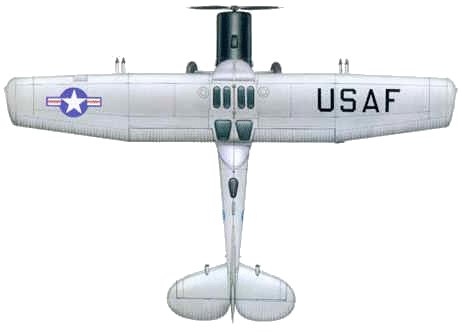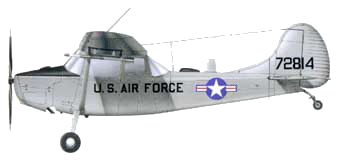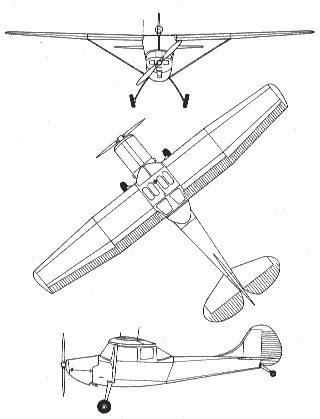|

Cessna O-1 Bird Dog

The Cessna Bird Dog was the most popular
light aircraft used by the US Army for liaison and observation in the
post-war period. More than 3,500 machines left the assembly lines from the
end of 1950 and remained in service until the late 1970s, taking part in
the Korean War and Vietnamese War (see also History of the O-1 Bird Dog).
The Bird Dog was derived directly from the Cessna 170, a commercial model
in production in 1950. From the first order for fourteen planes in June
1950, the numbers increased dramatically, until by October 1954 the total
production of L-19As (as they were originally designated) was 2,486. Two
years later another 310 TL-19D training planes were ordered, while in 1957
the final version appeared, namely the improved and more powerful L-19E,
which brought the total production to 3,431 machines. In 1962 the
different versions were renamed, in sequence, O-1A, O-1B, TO-1D and O-1E.
Few aircraft were as important for the
efficient conduct of war operations in Vietnam as the small, unarmed
Cessna O-1B, previously known as the L-19. Spearhead of the FAC (Forward
Air Control), it formed part of the US Army organization until 1965, when
all fixed-wing observation aircraft were turned over to the USAF. Flying
at low level and reduced speed, their duty was to discover objectives, for
the most part concealed in the jungle, such as groups of guerrillas,
convoys travelling along the Ho Chi Minh Trail, or enemy units lying in
ambush for unsuspecting government troops. Having spotted the enemy, they
would immediately radio the DASC (Direct Air Support Centre) which, as a
rule, would be able to get attack aircraft to the spot within half an hour
(see also Fire Support Coordination - Tactical Air Support). The latter
were again guided by the Bird Dog pilots who, in addition to pinpointing
the objective with smoke or magnesium flares, would check the
effectiveness of the strikes, if necessary correcting the aim. However,
the O-1s were an easy target for the enemy, who could often hit them with
ordinary rifle fire, without recourse to heavy anti-aircraft fire. Many
Bird Dog pilots lost their lives while carrying out their duty; they were
usually officers with years of experience, veterans of many battles. Among
the finest fighters, they succeeded in converting their little unarmed
planes into formidable offensive weapons.




Technical Specifications
Aircraft:
Cessna O-1E
Year: 1956
Type: observation
Manufacturer: Cessna Aircraft Co.
Engine: Continental 0-470-11, 6 cyl., air cooled
Power: 216hp
Wingspan: 36ft (10.97m)
Length: 25ft 10in (7.87m)
Height: 7ft 4in (2.23m)
Wing area: 174sq ft (16.16mē)
Max take-off weight: 2,400 lb (1.090 kg)
Empty weight: 1,614 lb (732 kg)
Max speed: 130mph (209km/h)
Service ceiling: 18,500ft (5,640m)
Range: 530mi (853km)
Crew: 3
|
